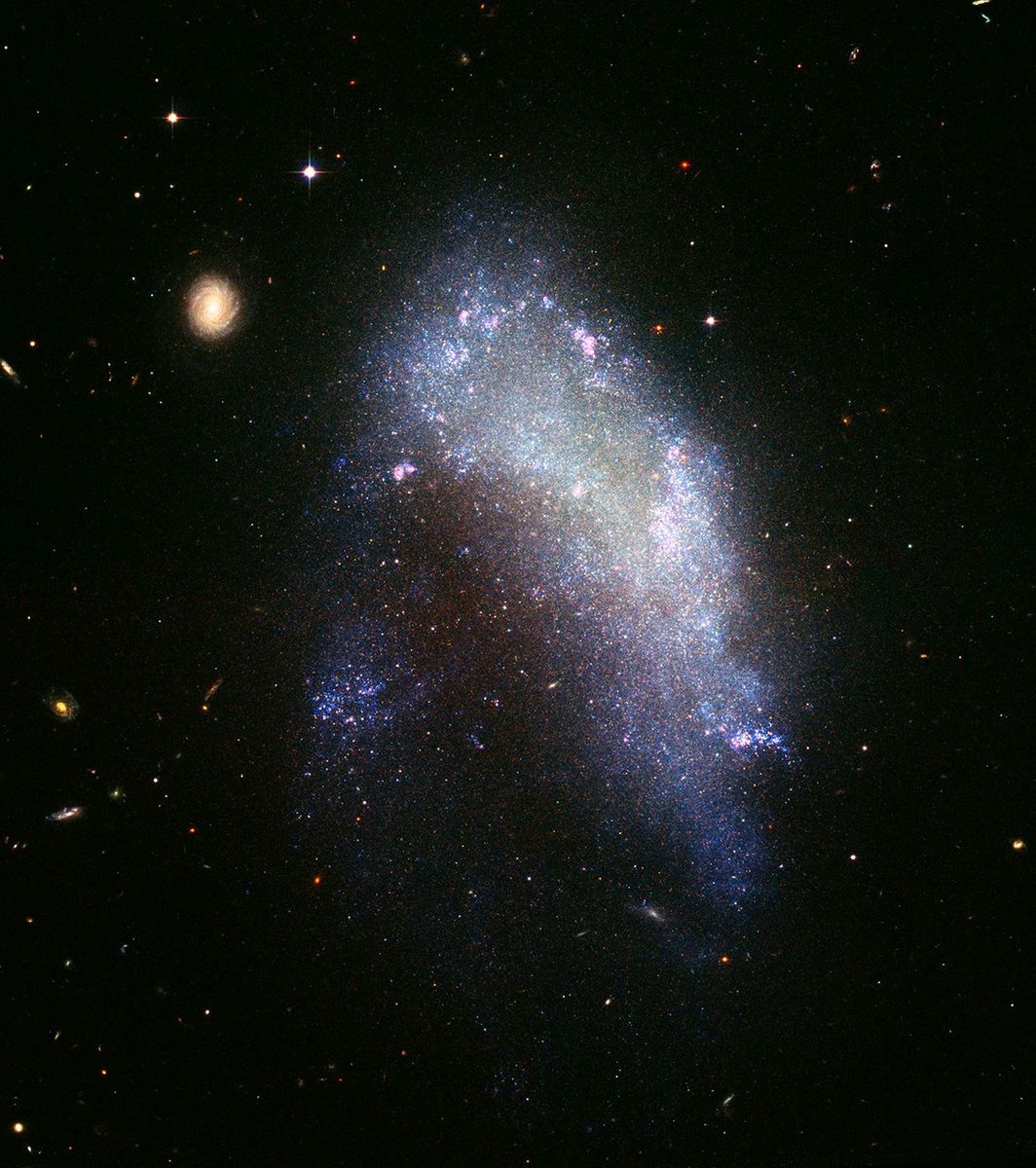NGC 1427A Galaxy is an irregular (Ir) type galaxy located within the Fornax Cluster. First observed in the 19th century, this galaxy is a critical subject for understanding dynamic processes within clusters. Due to its proximity to the central regions of the Fornax Cluster, NGC 1427A is also an ideal example for studying the effects of the cluster environment on galaxies.

NGC 1427A Galaksisi (NASA)
Physical and Structural Properties
NGC 1427A is astronomically classified as an irregular galaxy. These types of galaxies generally lack a distinct symmetrical structure unlike spiral or elliptical galaxies, and their irregular shapes indicate disturbances in star formation and gas distribution.
Since NGC 1427A is located within the Fornax Cluster, it stands out as a galaxy affected by the intracluster environment. The hot gas and gravitational forces of the cluster shape the galaxy’s gas distribution and star formation activity. In this context, the irregular structure observed in NGC 1427A is likely a result of the dynamic processes occurring in the cluster environment.
Star Formation and Gas Content
NGC 1427A hosts young and intermediate-age star populations. Especially H-alpha (Hα) emission line observations have revealed the presence of active star-forming regions. Irregular gas distribution and high-velocity gas motions have been detected within the galaxy.
- H I (Neutral Hydrogen) Mass: Approximately 5 × 10^8 solar masses
- H II Regions: Numerous, irregularly distributed young star clusters are associated.
These features indicate that NGC 1427A still contains a significant amount of gas and continues star formation. However, the hot intracluster medium of the Fornax Cluster can cause partial gas loss from the galaxy through processes such as ram pressure stripping. This situation is one of the important factors affecting the evolution of the galaxy.
Dynamic and Environmental Effects
Due to its proximity to the central regions of the Fornax Cluster, NGC 1427A interacts with other cluster galaxies and hot gas. Gravitational forces and the pressure of the hot gas create various effects on the galaxy:
- Ram Pressure Stripping: While moving through the hot intracluster medium, the galaxy loses part of its gas. This mechanism can reduce the gas content and limit star formation.
- Tidal Effects: Close encounters with other galaxies can cause structural disruptions and changes in gas flows.
- Kinematic Features: Spectroscopic measurements reveal that NGC 1427A has irregular motions and shows acceleration within the cluster environment.
These dynamic effects play a decisive role in the evolution of the galaxy’s morphological and star formation characteristics.
Spectral Properties and Metallicity
Spectral analyses show that the metallicity values of the star populations in NGC 1427A range from low to intermediate levels. This indicates that the young stars in the galaxy do not yet contain a high amount of heavy elements. Metallicity measurements provide information about the evolutionary history of the galaxy and its star formation processes.
In conclusion, NGC 1427A can be defined as an irregular galaxy located within the Fornax Cluster, clearly reflecting the effects of the cluster environment. Its structural irregularities, gas distribution, and star formation features are closely related to the dynamic processes within the cluster. In this context, NGC 1427A is an important observational target for studying galaxy evolution, cluster environmental effects, and star formation mechanisms.


